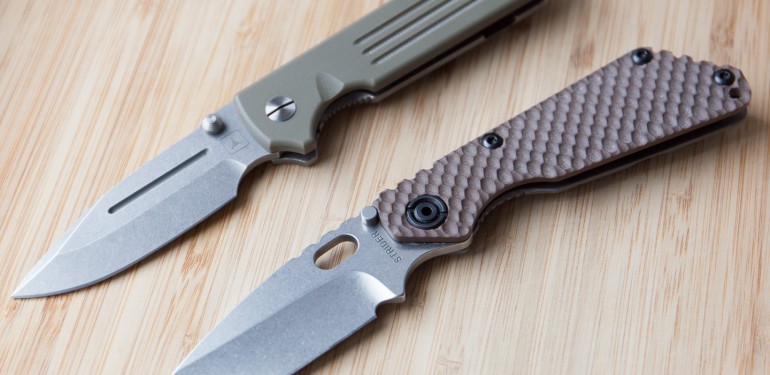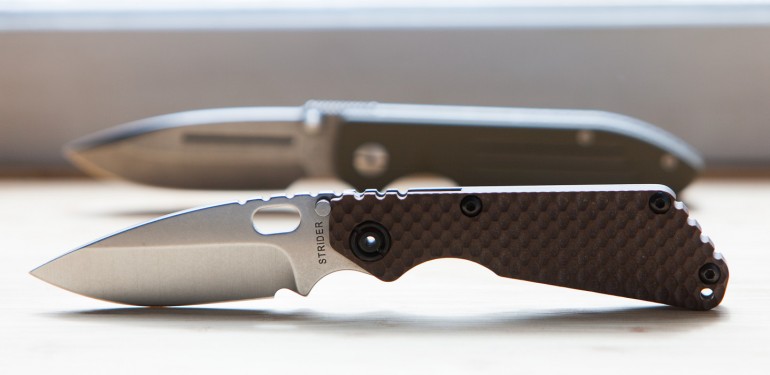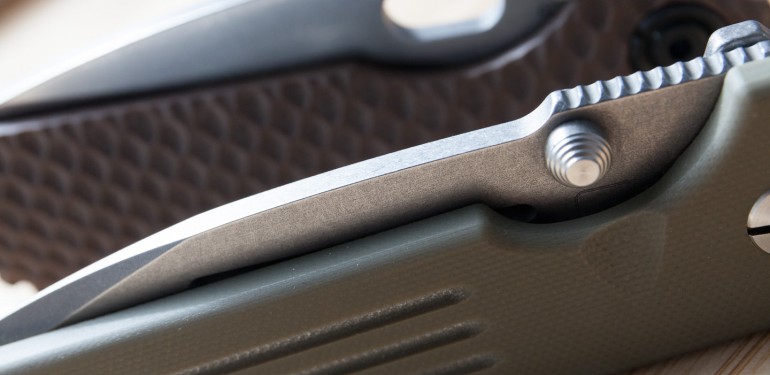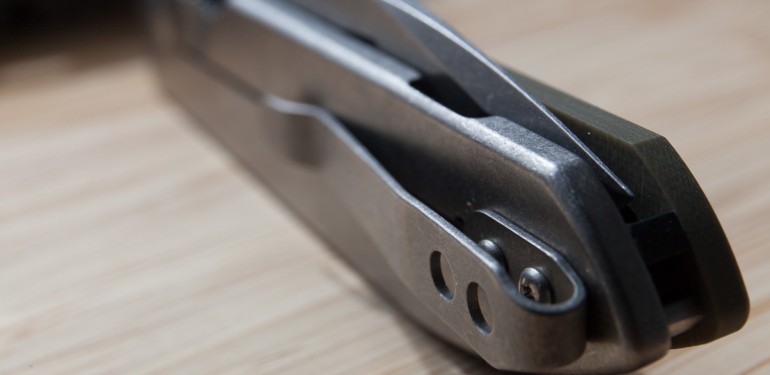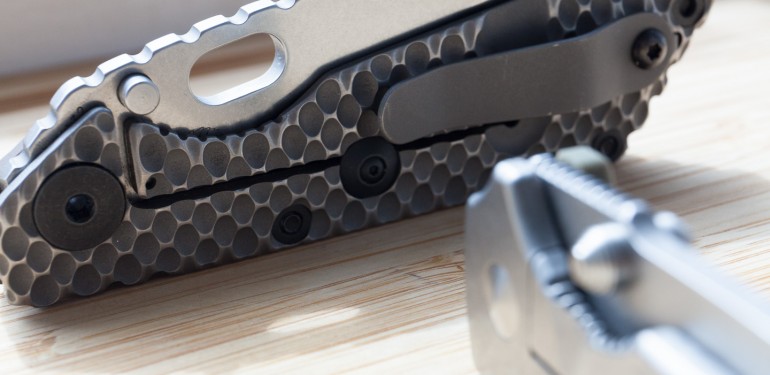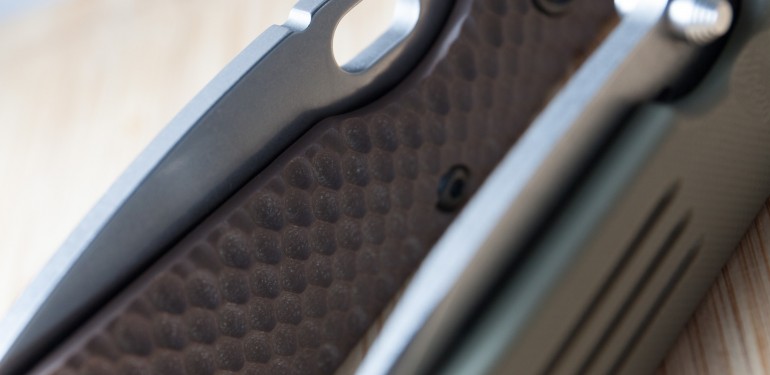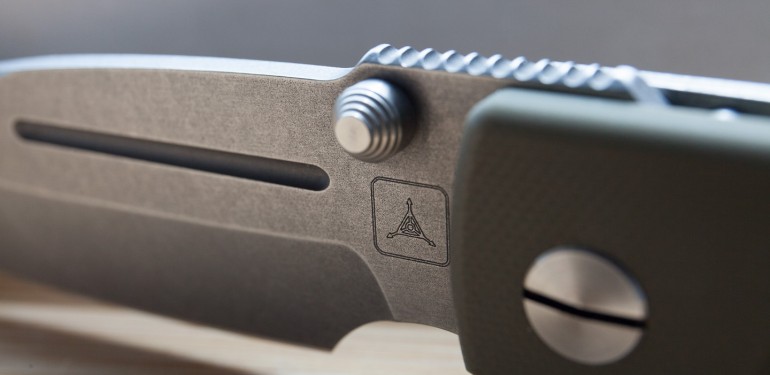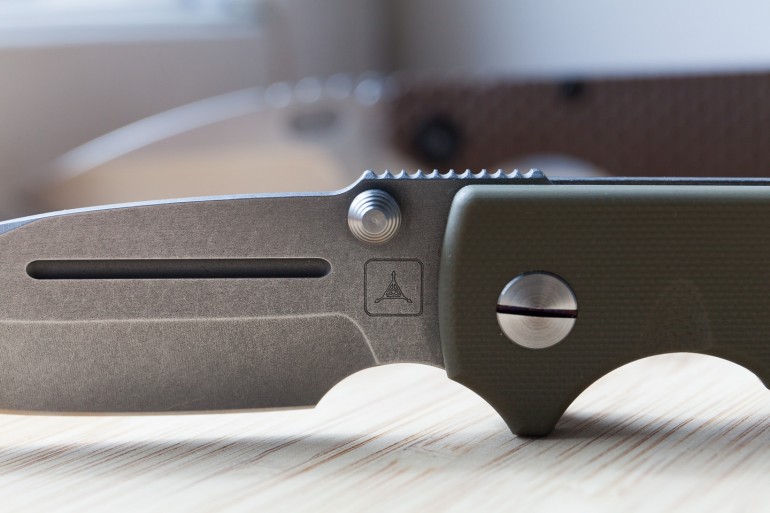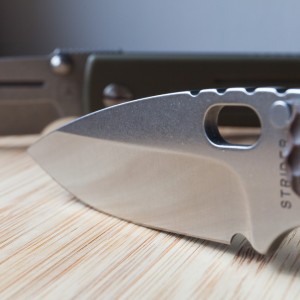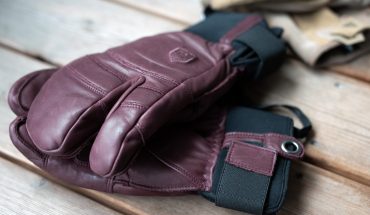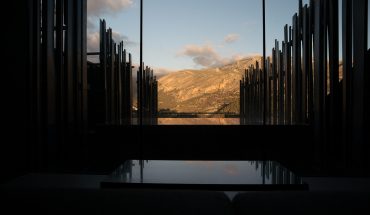Two of the most iconic knives of the tactical folder knife frenzy the last few years are the Strider Knives SNG and the production Dauntless from Triple Aught Design. Both are high-end production knives with 3.5” CPM steel blades, titanium framelocks, G10 scales and serves the same purpose as general purpose hard-use knives for the field.
Mick Strider is somewhat polarizing figure with a “military” background, but no one seems to be sure what he’s really done either in the military or as a contractor. What’s certain is that his knives have been a runaway success and are known for a rock solid construction, light weight, nice ergonomics, cool design and, of course, the military connection. The SNG is basically a smaller version of the SMF (“Strider Military Folder”, NSN 1095-01-531-5015), the first folding knife ever issued within the USMC and the first in over 60 years to an individual unit (Detachment 1 of the MARSOC). The SMF has a 4” blade which makes it just a bit bigger than necessary for most people and that’s why the SNG is the overall more popular choice and 3.5” blades have become the de-facto standard in the tactical/general use folding knife category.
The SNG is available in a few variations as a production knife with different grips and finishes and a number of stores has had special runs made for them with other steels and blade shapes. There’s the basic “Lego” version (known so for it’s brick-like scale), the Gunner Grip with machined contouring and dimples on both the frame and scale to increase grip and finally the Concealed Carry which has a smooth contoured handle and no pocket clip. Not all finishes are available for each version, the tiger stripe blade is not available on the Gunner Grip, for example, and some are some more unusual finishes (like the Digicam pattern). In addition it’s available as a custom by Mick and Duane Dwyer (also of Strider Knives) in other materials with more or less wicked and experimental grinds (it was Mick Strider that coined the term “Nightmare grind” since it was so difficult to grind the compound forms).
The Gunner Grip SNG we have here has a ¾ hollow ground spear point blade with a medium stone wash finish in CPM S30V with Coyote brown scale. It has a large forward choil and jimping on top of the blade which means that you can really get down on the blade if needed. The shape is surprisingly ergonomic and let’s you apply vast amounts of pressure if needed. The scale and backspacer is milled from a single piece of G10, together with the beefy pivot and the 0.165” thick blade stock that makes for an overbuilt and robust knife that still only weighs in at 125 grams. Every design and engineering decision points to a knife made to stand up to hard use, and if you search on YouTube there are many who have tested to find the breaking point of their Striders without succeeding.
Triple Aught Design is not a knife maker per se but have had collaborations with different knife makers for quite some time. Strider has made a small run of SNG’s with Digicam blade and the TAD signature fullers that was sold exclusively through TAD. TAD’s knife collaborations have reached iconic status and every once in a while they announce a new special run from either a custom maker or some well-regarded production company where thousands of persons enter a lottery for a chance to win a spot to buy one of the knifes they release.
The Dauntless is in essence a concept or framework and not a specific product by TAD. It basically stipulates a folding knife with a 2.5-4” modified spearpoint blade with a single fuller and a clean handle featuring TADs three fullers. Every custom Dauntless have had their makers special twist to the original concept and then in 2012 TAD announced that they would make a production version, purified to the very essence of the Dauntless and at least slightly more available than the 10-12 knives usually made in each batch of custom knives. However, whenever they become available they still sell out in minutes and are extremely sought after on the second hand market. For a production knife they are at the very top of the desireability scale (together with the ZT 0560 and maybe the Hinderer XM-18). Who actually makes them for TAD is still a mystery.
The MK3 version of the Dauntless has a stone washed blade in contrast to the the MK2’s bead blasted blade while the MK1 has an all titanium handle. Both the MK2 and MK3 have a titanium frame and a G10 (black or green) presentation side, both sides are nicely chamfered to reduce hot spots in the hand. The 3.4″ blade is flat ground CPM S35VN, 0.140″ thick and it weighs in at a total of 145 g.
Comparing the two, the SNG has a slightly longer and thicker blade and is lighter. It has a much finer stone wash on the blade with just a little hint of some vertical grind lines shining through. The MK3 seems to have an acid treated blade (matching the color of the titanium frame) with much heavier stone wash, the grind lines are still very prominent and makes the steel almost look pitted. This is the single most disappointing aspect of the TAD.
The Strider’s blade shape is very elegant and the hollow grind only enhances that impression, the best way to describe the Dauntless’s bayonet blade is as defined by features instead of an overall integrated design. My feeling is that it’s a bit disjointed and the step up to the, quite aggressive, jimping particularly stands out. The jimping’s also limited to the back of the blade so it doesn’t engage the thumb when using the front choil grip for fine control work. Overall the knife has very straight lines and I would describe it as functional design while the SNG is more functional art.
What I really appreciate in the Strider is how the design is defined by negative design to add function. Both the thumb hole and jimping is made by removing material, lightening the knife in the process. Ergonomically it’s a home run with the widening rear end filling up the hand and the machining means that it’s very grippy, it’s a knife that you can grab hard and stab stuff with full force if ever needed without sacrificing control for finer tasks. The MK3 is not quite as versatile, it’s comfortable but since it doesn’t fill the hand in the same way you loose some potential power. The handle has more chamfered edges than the SNG which makes it a little easier on the palms when gripping hard though. Neither pocket clip is in the way when holding them.
When opening the SNG the lock bar thunks into place in the most reassuring way possible, other than that the MK3 feels as a much more refined folder. The SNG has a quite sticky lock combined with strong lock bar tension and narrow gap that sometimes makes it hard to reach in with the thumb to unlock it, especially when sweaty. I guess it reduces the chance for unintentional unlocking but it’s a bit too much and doens’t quite rhyme with the overall elegance of the design. When new it wasn’t nearly as smooth as the MK3 (or a Chris Reeve Sebenza for that matter) but that has become better with time and some dedicated detent ball race work.
Unlocking the MK3 is a joy, the thumb just automatically finds the edge of the lock bar and the relatively light tension and complete lack of any stickiness means it just glides open and primes it for closing the blade. Both knifes uses bronze bushings and quite hefty pivots meaning that they won’t close themselves under the sole force of gravity and it also takes a little force to open them. Blade seating is perfect in both of them and there’s no blade play in either direction. Even though it’s similar steels (but not quite identical), the Strider dulls much quicker and is also harder to sharpen. I have a problem putting on a razor edge and the MK3 is a clearly better cutter. Maybe this particular example had a bad heat treatment, I don’t really know since I don’t have any other S30V blade to compare it to.
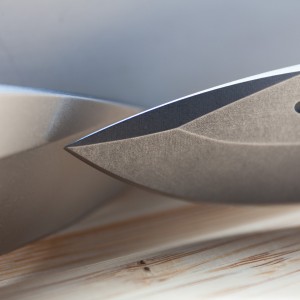
Clearly visible grind lines and an almost pitted look on the steel on the blade of the MK3 Dauntless.
Hardware wise the Strider uses a pivot that needs a custom tool if it’s ever going to be taken apart and the dome hex screws prutrudes just a little bit spoiling the presentation side appearance somewhat. The TAD has a pivot that can take either a flat head screw driver or a quarter for quick and easy field adjustments and the rest of the screws are perfectly sunk into the scale. The backside of the SNG has a lot more going on and is not nearly as clean as this Dauntless. The dimpled and contoured machining is both functional and just look awesome but the pocket clip and its screw are kinda sore for the eyes. The MK3 has very evenly matched blade and frame in both finishing and color even though they are made of different materials.
The TAD has a black back spacer with some integrated jimping that ends with a small cavity and a post for a perfect lanyard solution. The Strider is more or less a joke for those who wants to attach a lanyard, it has a hole that goes through both the frame and scale but when closed the edge of the blade reaches down 1/3 of the hole meaning any lanyard attached will either get frayed or severed over time.
Both knives looks very inviting and just begs to be picked up and used hard. I have an easier time abusing the Strider SNG since I know that it can be replaced, even though it’s 50% more expensive than the production Dauntless. When it comes down to it, the Strider wins in overall design and concept while the TAD (and their manufacturer) clearly has better quality control. What I’m really interested to know how a Mick Strider custom version of the SNG holds up, perhaps against a custom Dauntless. Might just have to source one of either.
Strider Knives SNG Gunner Grip in Coyote Brown, $475 is (sometimes) available from Blade HQ or Arizona Custom Knives. Triple Aught Design Dauntless MK3: G10 in Green, $300 is (sometimes) available from Triple Aught Design.

